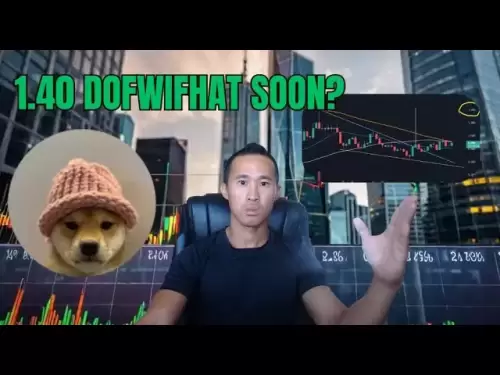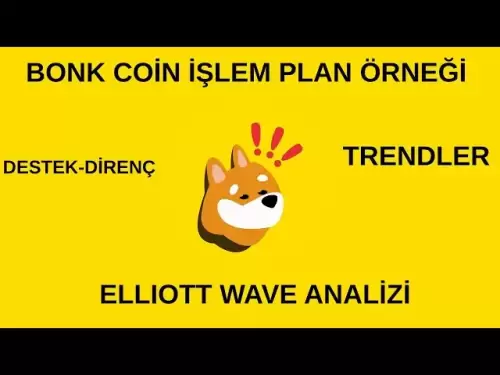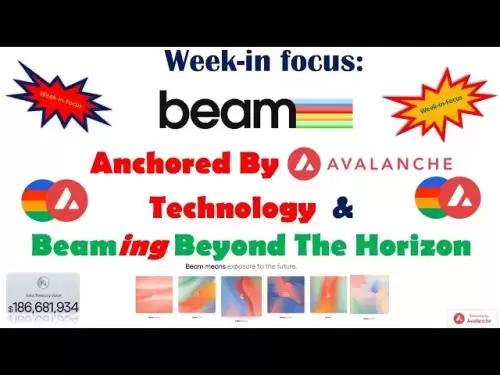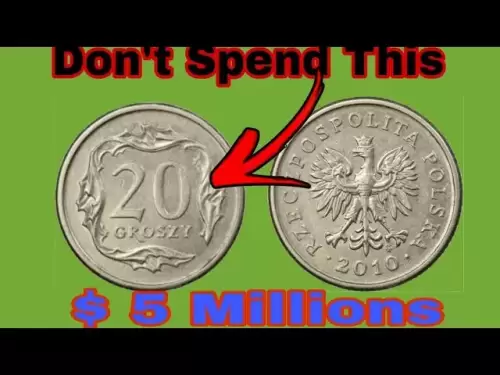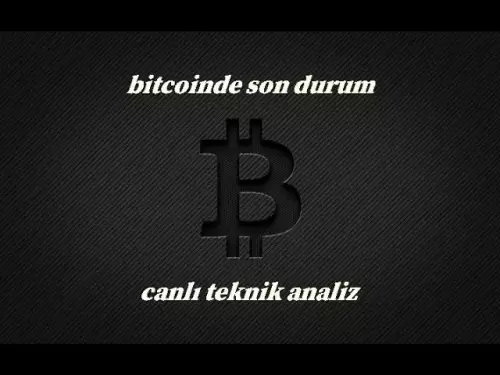-
 Bitcoin
Bitcoin $108,562.4295
0.46% -
 Ethereum
Ethereum $2,533.9553
1.52% -
 Tether USDt
Tether USDt $1.0002
-0.01% -
 XRP
XRP $2.2542
2.23% -
 BNB
BNB $662.4567
1.48% -
 Solana
Solana $151.4114
3.48% -
 USDC
USDC $0.9999
0.00% -
 TRON
TRON $0.2860
0.91% -
 Dogecoin
Dogecoin $0.1685
3.72% -
 Cardano
Cardano $0.5809
1.63% -
 Hyperliquid
Hyperliquid $39.2916
1.85% -
 Sui
Sui $2.8874
0.85% -
 Bitcoin Cash
Bitcoin Cash $496.5801
2.72% -
 Chainlink
Chainlink $13.3582
2.48% -
 UNUS SED LEO
UNUS SED LEO $9.0279
0.07% -
 Avalanche
Avalanche $18.0773
2.30% -
 Stellar
Stellar $0.2426
3.05% -
 Toncoin
Toncoin $2.9086
6.01% -
 Shiba Inu
Shiba Inu $0.0...01170
2.97% -
 Hedera
Hedera $0.1587
3.47% -
 Litecoin
Litecoin $87.4596
1.13% -
 Monero
Monero $317.0425
0.73% -
 Polkadot
Polkadot $3.3778
1.90% -
 Dai
Dai $0.9999
-0.01% -
 Ethena USDe
Ethena USDe $1.0001
-0.01% -
 Bitget Token
Bitget Token $4.4095
0.63% -
 Uniswap
Uniswap $7.3593
6.80% -
 Pepe
Pepe $0.0...09910
3.64% -
 Aave
Aave $274.7388
2.68% -
 Pi
Pi $0.4607
0.48%
Is the widening of SUI's exchange bid-ask spread a risk signal?
A widening bid-ask spread for SUI signals reduced liquidity and increased volatility, posing risks for traders and investors in the cryptocurrency market.
Apr 26, 2025 at 08:49 am

The widening of the SUI token's exchange bid-ask spread can indeed be a significant risk signal within the cryptocurrency market. This phenomenon occurs when there is a noticeable difference between the highest price a buyer is willing to pay (bid) and the lowest price a seller is willing to accept (ask). Understanding this spread and its implications is crucial for investors and traders alike.
Understanding the Bid-Ask Spread
The bid-ask spread is a fundamental concept in financial markets, including cryptocurrency exchanges. It represents the difference between the highest price that a buyer is willing to pay for a token and the lowest price that a seller is willing to accept. For instance, if the highest bid for SUI is $1.00 and the lowest ask is $1.05, the spread is $0.05. This spread is influenced by various factors, including liquidity, market volatility, and trading volume.
Why Does the Spread Matter?
A widening bid-ask spread can indicate several potential issues within the market for a particular token like SUI. Firstly, it can signal reduced liquidity, meaning there are fewer buyers and sellers actively participating in the market. This can lead to increased difficulty in executing trades at favorable prices. Secondly, a wider spread often reflects higher transaction costs, as traders need to overcome the spread to make a profit. Lastly, it can be a precursor to increased volatility, as the market struggles to find an equilibrium price.
The Role of Liquidity in the Spread
Liquidity is a critical factor affecting the bid-ask spread. When a token like SUI experiences a decrease in liquidity, the spread tends to widen. This happens because there are fewer market participants willing to buy or sell the token at any given time, leading to larger gaps between bids and asks. High liquidity, on the other hand, typically results in a narrower spread, as there are more participants actively trading, which helps to keep prices more consistent.
Market Volatility and the Spread
Market volatility is another key driver of the bid-ask spread. In times of high volatility, the spread for SUI can widen significantly. This is because traders and market makers may become more cautious, increasing the price they demand to sell (ask) and decreasing the price they are willing to pay (bid) to account for the increased risk. Conversely, during periods of low volatility, the spread tends to be narrower, as there is less uncertainty about future price movements.
Impact on Trading Strategies
For traders, a widening bid-ask spread can have significant implications for their trading strategies. When the spread for SUI increases, it becomes more challenging to enter and exit positions without incurring substantial costs. Traders may need to adjust their strategies, such as using limit orders to control the price at which they buy or sell, or they might choose to trade less frequently to avoid the higher transaction costs associated with a wider spread.
How to Monitor the Bid-Ask Spread
Monitoring the bid-ask spread for SUI involves several steps that traders can take to stay informed about market conditions:
- Choose a reliable exchange: Select an exchange that provides real-time data on bid and ask prices for SUI.
- Use trading tools: Utilize trading platforms that offer tools to track the spread and other market metrics.
- Set up alerts: Configure alerts to notify you when the spread for SUI exceeds a certain threshold, allowing you to react promptly to changes in market conditions.
- Analyze historical data: Review historical data on the bid-ask spread to understand typical patterns and identify anomalies that might signal increased risk.
Is a Widening Spread a Risk Signal for SUI?
A widening bid-ask spread for SUI can indeed be considered a risk signal. It suggests that the market may be experiencing reduced liquidity and increased volatility, both of which can lead to higher transaction costs and greater difficulty in executing trades. For investors and traders, this can be a warning sign to reassess their positions and consider the potential impact on their investment strategies.
Frequently Asked Questions
Q: Can a widening bid-ask spread be a temporary phenomenon?
A: Yes, a widening bid-ask spread can sometimes be a temporary phenomenon caused by short-term market conditions, such as a sudden news event or a temporary drop in liquidity. However, if the spread remains wide over an extended period, it may indicate more systemic issues within the market for SUI.
Q: How can traders mitigate the risks associated with a widening bid-ask spread?
A: Traders can mitigate the risks by using limit orders to control the price at which they buy or sell, reducing the frequency of trades to minimize transaction costs, and diversifying their portfolio to spread risk across multiple assets.
Q: Are there any tools specifically designed to help track the bid-ask spread for SUI?
A: Yes, there are several tools and platforms that provide real-time data and analytics on the bid-ask spread for SUI. These include trading platforms like Binance and Coinbase, as well as specialized market analysis tools such as TradingView and Coinigy.
Q: Does a widening bid-ask spread always indicate a bearish market for SUI?
A: Not necessarily. While a widening spread can be associated with increased risk and potential bearish signals, it does not always indicate a bearish market. It could also be a result of other factors such as reduced liquidity or increased volatility, which do not necessarily imply a downward trend in the price of SUI.
Disclaimer:info@kdj.com
The information provided is not trading advice. kdj.com does not assume any responsibility for any investments made based on the information provided in this article. Cryptocurrencies are highly volatile and it is highly recommended that you invest with caution after thorough research!
If you believe that the content used on this website infringes your copyright, please contact us immediately (info@kdj.com) and we will delete it promptly.
- Elon Musk, Andrew Yang, and Polymarket: What's the Buzz?
- 2025-07-07 10:30:12
- Lightchain AI's Bonus Round: The Final Chance Before Mainnet & Ecosystem Tools
- 2025-07-07 10:30:12
- TON Foundation, UAE Golden Visa, and Toncoin Staking: A New Chapter in Crypto Residency?
- 2025-07-07 10:50:12
- Altcoin Prices, Institutional Investors, and the Ethereum Rotation: What's the Deal?
- 2025-07-07 10:50:12
- TON Coin, Golden Visa, and UAE Denial: What's the Real Deal?
- 2025-07-07 10:55:12
- PEPE's Bullish Trend: Riding the 50% Gain Wave?
- 2025-07-07 10:55:12
Related knowledge
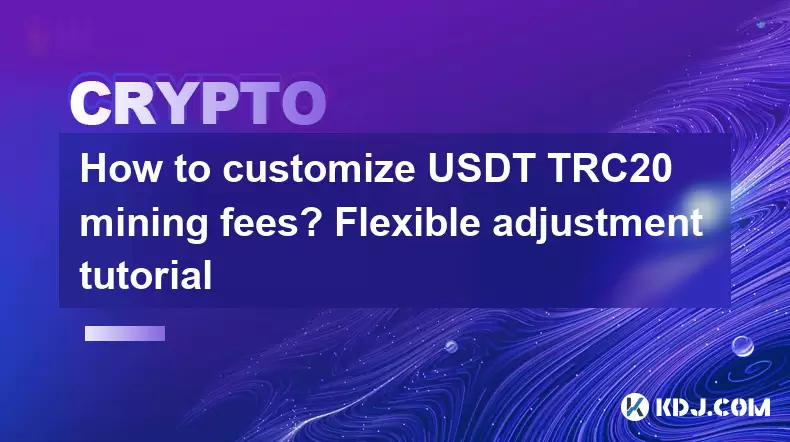
How to customize USDT TRC20 mining fees? Flexible adjustment tutorial
Jun 13,2025 at 01:42am
Understanding USDT TRC20 Mining FeesMining fees on the TRON (TRC20) network are essential for processing transactions. Unlike Bitcoin or Ethereum, where miners directly validate transactions, TRON uses a delegated proof-of-stake (DPoS) mechanism. However, users still need to pay bandwidth and energy fees, which are collectively referred to as 'mining fe...
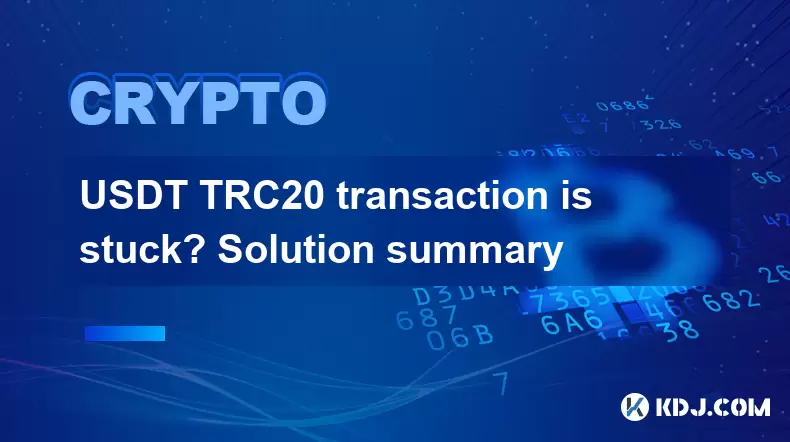
USDT TRC20 transaction is stuck? Solution summary
Jun 14,2025 at 11:15pm
Understanding USDT TRC20 TransactionsWhen users mention that a USDT TRC20 transaction is stuck, they typically refer to a situation where the transfer of Tether (USDT) on the TRON blockchain has not been confirmed for an extended period. This issue may arise due to various reasons such as network congestion, insufficient transaction fees, or wallet-rela...
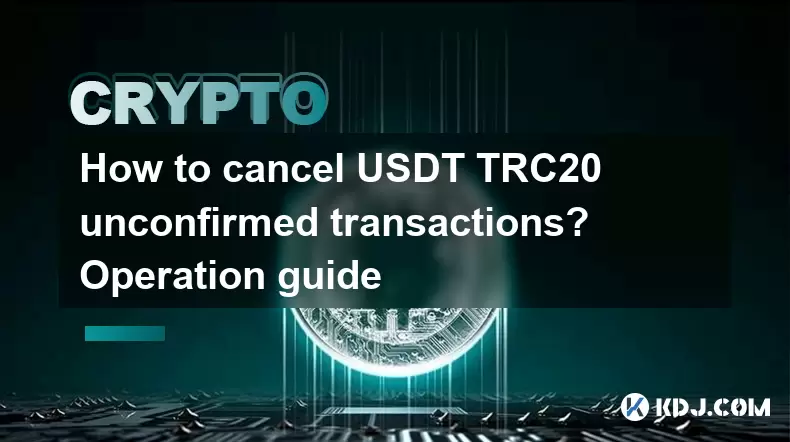
How to cancel USDT TRC20 unconfirmed transactions? Operation guide
Jun 13,2025 at 11:01pm
Understanding USDT TRC20 Unconfirmed TransactionsWhen dealing with USDT TRC20 transactions, it’s crucial to understand what an unconfirmed transaction means. An unconfirmed transaction is one that has been broadcasted to the blockchain network but hasn’t yet been included in a block. This typically occurs due to low transaction fees or network congestio...
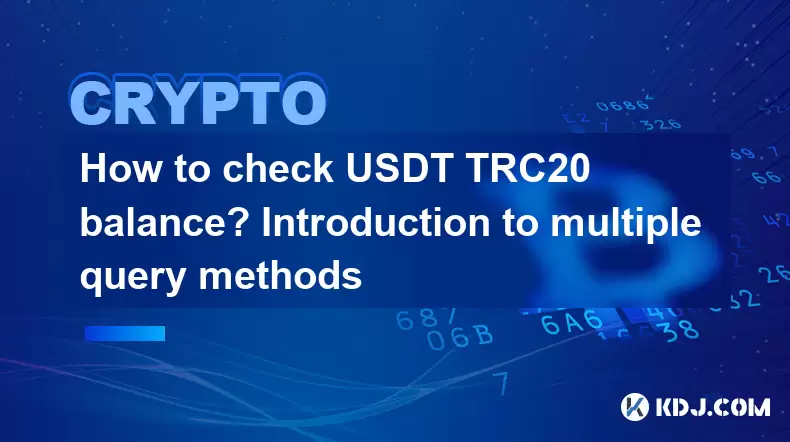
How to check USDT TRC20 balance? Introduction to multiple query methods
Jun 21,2025 at 02:42am
Understanding USDT TRC20 and Its ImportanceUSDT (Tether) is one of the most widely used stablecoins in the cryptocurrency market. It exists on multiple blockchain networks, including TRC20, which operates on the Tron (TRX) network. Checking your USDT TRC20 balance accurately is crucial for users who hold or transact with this asset. Whether you're sendi...
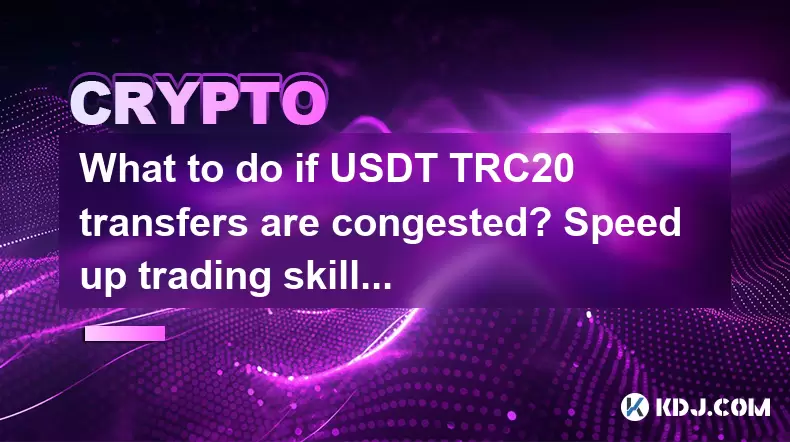
What to do if USDT TRC20 transfers are congested? Speed up trading skills
Jun 13,2025 at 09:56am
Understanding USDT TRC20 Transfer CongestionWhen transferring USDT TRC20, users may occasionally experience delays or congestion. This typically occurs due to network overload on the TRON blockchain, which hosts the TRC20 version of Tether. Unlike the ERC20 variant (which runs on Ethereum), TRC20 transactions are generally faster and cheaper, but during...
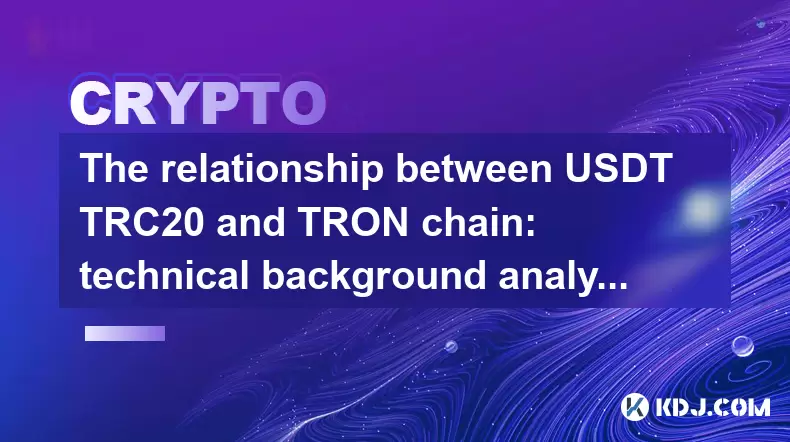
The relationship between USDT TRC20 and TRON chain: technical background analysis
Jun 12,2025 at 01:28pm
What is USDT TRC20?USDT TRC20 refers to the Tether (USDT) token issued on the TRON blockchain using the TRC-20 standard. Unlike the more commonly known ERC-20 version of USDT (which runs on Ethereum), the TRC-20 variant leverages the TRON network's infrastructure for faster and cheaper transactions. The emergence of this version came as part of Tether’s...

How to customize USDT TRC20 mining fees? Flexible adjustment tutorial
Jun 13,2025 at 01:42am
Understanding USDT TRC20 Mining FeesMining fees on the TRON (TRC20) network are essential for processing transactions. Unlike Bitcoin or Ethereum, where miners directly validate transactions, TRON uses a delegated proof-of-stake (DPoS) mechanism. However, users still need to pay bandwidth and energy fees, which are collectively referred to as 'mining fe...

USDT TRC20 transaction is stuck? Solution summary
Jun 14,2025 at 11:15pm
Understanding USDT TRC20 TransactionsWhen users mention that a USDT TRC20 transaction is stuck, they typically refer to a situation where the transfer of Tether (USDT) on the TRON blockchain has not been confirmed for an extended period. This issue may arise due to various reasons such as network congestion, insufficient transaction fees, or wallet-rela...

How to cancel USDT TRC20 unconfirmed transactions? Operation guide
Jun 13,2025 at 11:01pm
Understanding USDT TRC20 Unconfirmed TransactionsWhen dealing with USDT TRC20 transactions, it’s crucial to understand what an unconfirmed transaction means. An unconfirmed transaction is one that has been broadcasted to the blockchain network but hasn’t yet been included in a block. This typically occurs due to low transaction fees or network congestio...

How to check USDT TRC20 balance? Introduction to multiple query methods
Jun 21,2025 at 02:42am
Understanding USDT TRC20 and Its ImportanceUSDT (Tether) is one of the most widely used stablecoins in the cryptocurrency market. It exists on multiple blockchain networks, including TRC20, which operates on the Tron (TRX) network. Checking your USDT TRC20 balance accurately is crucial for users who hold or transact with this asset. Whether you're sendi...

What to do if USDT TRC20 transfers are congested? Speed up trading skills
Jun 13,2025 at 09:56am
Understanding USDT TRC20 Transfer CongestionWhen transferring USDT TRC20, users may occasionally experience delays or congestion. This typically occurs due to network overload on the TRON blockchain, which hosts the TRC20 version of Tether. Unlike the ERC20 variant (which runs on Ethereum), TRC20 transactions are generally faster and cheaper, but during...

The relationship between USDT TRC20 and TRON chain: technical background analysis
Jun 12,2025 at 01:28pm
What is USDT TRC20?USDT TRC20 refers to the Tether (USDT) token issued on the TRON blockchain using the TRC-20 standard. Unlike the more commonly known ERC-20 version of USDT (which runs on Ethereum), the TRC-20 variant leverages the TRON network's infrastructure for faster and cheaper transactions. The emergence of this version came as part of Tether’s...
See all articles





















